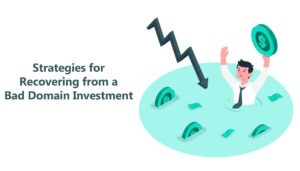The Emerging Paradigm: Digital Assets in Domain Financing

The integration of digital assets into the realm of domain financing represents a significant evolution in how online properties are valued and leveraged for financial purposes. In this rapidly evolving digital landscape, understanding the role and impact of digital assets in domain financing is crucial for investors, lenders, and domain owners alike. This article delves into the intricacies of digital assets in the context of domain financing, examining their valuation, the risks involved, and their growing significance in this niche market.
Digital assets, in the context of domain financing, extend beyond the domain name itself. They can include associated web properties, intellectual property such as trademarks or copyrighted content, digital products or services, and even the data generated from web traffic and user interactions. The convergence of these assets with traditional domain name financing has opened new avenues for valuation and collateralization, allowing for more sophisticated and diverse financial arrangements.
I need to discuss the domain I own!
The valuation of digital assets in domain financing is a complex process that requires a nuanced understanding of the digital marketplace. Unlike physical assets, the value of digital assets is not solely determined by tangible metrics. Factors such as the domain’s online reputation, traffic volume, revenue generation, SEO rankings, and social media presence play a crucial role in determining its worth. Moreover, the potential for future revenue growth, scalability, and the domain’s relevance in a particular industry or niche are also considered. This multifaceted approach to valuation demands expertise in digital marketing, online business models, and industry trends.
One of the inherent challenges in leveraging digital assets for domain financing is the assessment of risks. The digital landscape is characterized by rapid changes in technology, consumer behavior, and market dynamics, which can significantly impact the value of digital assets. Fluctuations in web traffic, changes in search engine algorithms, or shifts in market demand can quickly alter a digital asset’s profitability and viability. Hence, lenders and investors in domain financing must adopt a dynamic risk assessment strategy, constantly monitoring the digital asset’s performance and market trends.
The legal aspect of using digital assets as collateral is another critical consideration. Ensuring clear ownership, protecting intellectual property rights, and complying with data privacy laws are paramount. Legal agreements must meticulously outline the terms of using digital assets as collateral, including the rights and obligations of both the borrower and the lender. These agreements should also address scenarios such as default or insolvency, detailing the process for the liquidation or transfer of digital assets.
Furthermore, the integration of digital assets in domain financing has been facilitated by advancements in technology, particularly blockchain and smart contracts. These technologies offer enhanced security, transparency, and efficiency in transactions. Smart contracts, for instance, can automate the release of funds based on predefined criteria or trigger the transfer of digital assets upon loan repayment, reducing the administrative burden and potential for disputes.
The role of digital assets in domain financing also extends to innovative funding models. Crowdfunding, tokenization, and equity-based financing are examples where digital assets are used to attract investment or secure funding. These models often appeal to a broader range of investors, including those in the tech-savvy, blockchain, and cryptocurrency communities, who are more inclined towards digital asset-based ventures.
In conclusion, the role of digital assets in domain financing is marked by a blend of opportunity and complexity. Valuation requires a deep understanding of the digital ecosystem, risk assessment must be agile and informed, legal structures need to be robust and clear, and technological advancements are to be leveraged for efficient transaction processing. As the digital economy continues to grow, the integration of digital assets in domain financing is poised to become more prevalent, offering innovative ways to capitalize on the burgeoning value of online properties.



